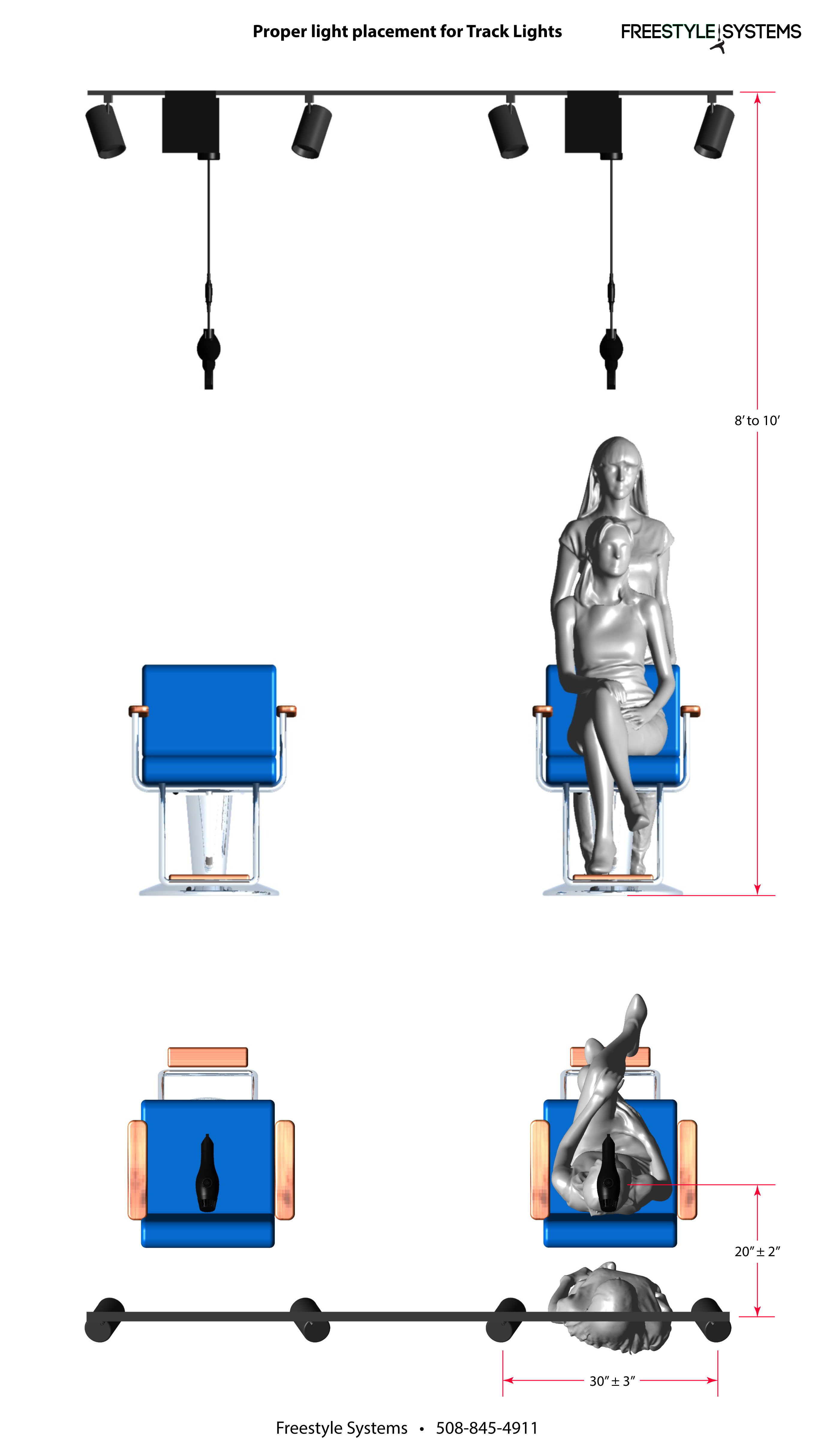Lighting Tips
Planning the lighting for your salon can be simplified into a few basic rules for different areas. To do this effectively, you need to understand three key terms: kelvin, lux, and lumens. It’s straightforward:
- Kelvin refers to the color temperature of light. A lower number, like 2700K, produces a yellowish-red light, similar to a standard light bulb. A higher number, like 5000K, produces a bluish light, commonly seen in office buildings. More on Kelvin

Your Client’s Hair
Use 3500 Kelvin lights to illuminate your client’s hair. LED lights are superior because their spectral power closely mimics the sun’s. The light is around 3500K an hour after sunrise and an hour before sunset, known as the “golden hour” for photography due to its perfect color temperature.
Your Client’s Face
For your client’s face, 2700-3000K is ideal, with 3000K being preferred. This temperature range gives the complexion a slight tan, whereas higher Kelvin light is not flattering for the skin.
Lumens and Lux
- Lumens: The amount of light emitted from a light source. More on Lumens
- Lux: The amount of light hitting a surface. More on Lux
Salon Lighting Plan
For overall lighting:
- 50 lumens per square foot
- 500 lux
For cutting stations:
- 100 to 150 lumens per square foot
- 800 to 2500 lux
Calculating Lighting Requirements
To determine your lighting needs in lumens:
- Calculate the total square footage of your salon.
- Multiply the square footage by 50 lumens per square foot for overall lighting.
Example:
- If your salon is 25 feet wide by 40 feet long, you have 1000 square feet (25 x 40 = 1000).
- Multiply 1000 sq ft by 50 lumens per sq ft to get 50,000 lumens.
- For 1000 lumen bulbs, you will need 50 bulbs. For 1500 lumen bulbs, you will need 33 bulbs.
Cutting Station Lighting
A typical cutting station is about 5 feet by 5 feet, or 25 square feet.
- You need 2,500 lumens (25 sq ft x 100 lumens per sq ft) above each cutting station.
Additional Tips
- Lights placed higher spread out more; cutting station lights should be lower.
- Dark walls absorb more light; consider adding more lighting.
- Avoid colored walls that may cast unwanted tones on hair.
Lighting Cheat Sheet
- Kelvin (color temperature):
- 3500K for hair
- 3000K for face
- Lumens: Amount of light emitted
- Lux: Amount of light hitting a surface
- CRI (Color Rendering Index): Ideal CRI is 80 or above for accurate color representation. Use LED lights with a CRI of 80 or higher for the best results.
Illuminate Your Salon: Zinke Hair Studio’s Perfect Lighting Setup
Experience the perfect salon lighting at Zinke Hair Studio, showcasing our light platforms, 2×2 ambient light, and specialized wall lights. Discover how these elements create an ideal salon environment on our salon lighting tips page.

Experience the elegance of Zinke Hair Salon in Ponte Vedra Beach, FL, where our Freestyle Systems weightless hair dryers and innovative salon lights enhance every stylist’s performance and client experience. ✨ #FreestyleSystems #SalonExcellence #ZinkeHairSalon
Light placement above station, 
© 2019 Freestyle Systems. All Rights Reserved. Privacy Policy Terms of Use


